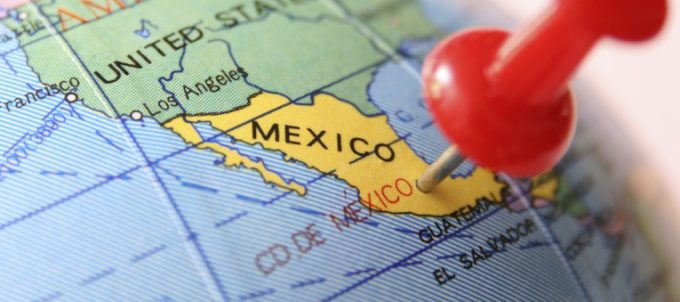Boxes piling into Mexican ports – but then piling up
Mexico’s box ports continue to boost throughput, fuelled by nearshoring and roaring trade with the ...

After tepid growth in 2023, Mexico’s container ports experienced a surge in traffic in January, and there are concerns that continuing growth will strain capacity.
Container throughput increased 20% over December for Mexico’s top 18 ports, to 728,116 teu.
The growth was led by the main Pacific gateways, with both Lazaro Cardenas and Manzanillo handling record volumes: the former registered 41.2% growth; while Manzanillo’s throughput rose 13.8%.
On the Gulf of Mexico, the container tally climbed 18.8%, led by 13.1% growth at the port of Veracruz.
The surge followed a rather lacklustre 2023 tally rising a mere 0.6%, to 8,361,312 teu. Throughput at the Pacific ports was up 2%, to 6,147,496 teu, while the container count slipped 3.6% on the Gulf coast, to 2,213,816 teu.
The January surge tallied with a sharp rise in container pricing from Asia to Mexico that month. According to Eternity Group’s EAX index, rates per 40ft jumped 51.18% from December, to $2,460. After decline in December, this pushed rates 40% above the level recorded last April. In December, 40ft rates sank 3.81% from November.
The spike in traffic has put a strain on infrastructure in Mexico.
“We have experienced capacity bottlenecks both in Manzanillo and Lazaro Cardenas. It seems that we are operating at maximum capacity due to the peak season and an increase on containers with finished vehicles coming from Asia as a result of lack of ro-ro. Rail is also congested,” reported Eric Meade CEO for Mexico at DHL Global Forwarding.
“To maintain sailing schedules and ensure timely arrivals at subsequent ports, carriers on West Coast services have made adjustments by temporarily omitting Manzanillo port due to heavy congestion. As a proactive solution, carriers are providing options for unloading containers at Lazaro Cardenas and finalizing service there, or alternatively, containers can await seamless connection to Manzanillo port on the next vessel,” he added.
To a large extent, the surge in volumes and rates has been attributed to a rush of Chinese exports before the lunar new year break, in conjunction with congestion at Chinese ports, but near-shoring has also been suggested as a big factor.
According to data from Mexico’s economy ministry, last year a record $36bn in foreign direct investment poured in, 2% more than in 2022. In H2 23, Laredo overtook the port of Los Angeles as the largest gateway for US imports, reflecting the rising tide of goods produced or assembled in Mexico for sale in its northern neighbour.
And observers don’t expect this momentum to slow, as Chinese manufacturers are joining multinational producers in setting up production facilities in Mexico to cater for the US market.
Mauricio de la Cerda, head of growth, North America region, at Mexico-based forwarder Nowports, agreed that that the nearshoring trend was continuing, but there were concerns that this growth could overwhelm Mexico’s ports.
“We’re facing capacity issues, especially at the Pacific ports,” he explained.
Moves are afoot to boost capacity at Lazaro Cardenas, however. Hutchison Ports, which operates the gateway’s TEC1 facility, announced in December that phase three of the box terminal expansion would start this year. This is set to raise the terminal’s capacity from 1.3m teu to 2m.
At the end of January, Hutchison received three electric rubber-tyred gantry cranes for the terminal, a $6.8m investment said to be just an early salvo in a major outlay of $220m for the expansion, which will in total include 35 new cranes.
Comment on this article